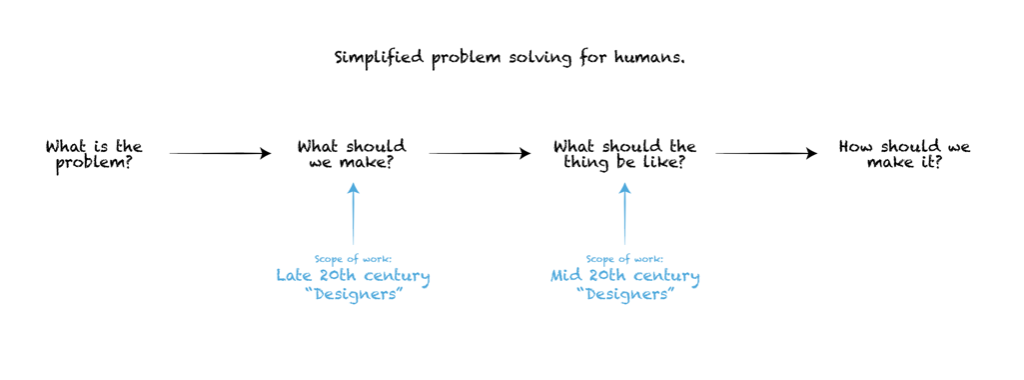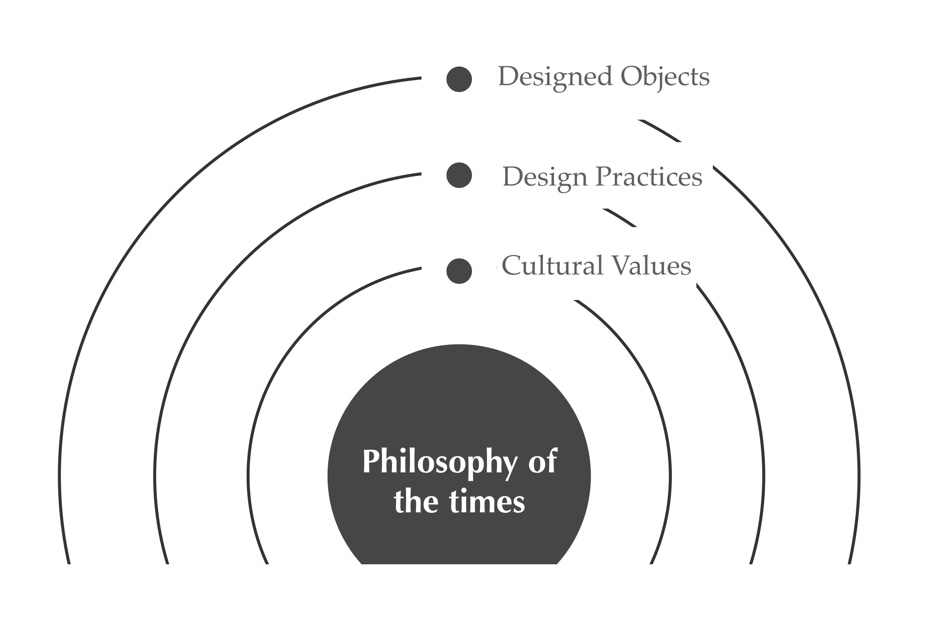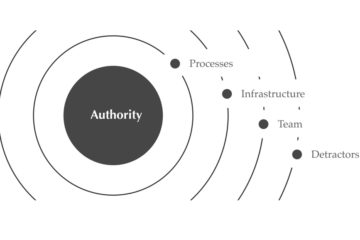This living essay is still in draft form. Please mind the typos, half-finished thoughts, and informal language. If you have comments, please email them to me. The purpose of this essay was originally to submit to the Design & Neoliberalism Special Issue of Design and Culture. I missed the deadline but I’ve enjoyed working on it either way 🙂
“The curious task of economics is to demonstrate to men how little they really know about what they imagine they can design” – F. A. Hayek
Understanding design as a reflection of cultural values at play.
As an applied art form, there are many lenses with which to understand design. Economic, political, technical, and social forces are in constant, interconnected evolution, and all of these forces have an impact on the artifacts humans create and the processes by which they create them.
At the core, the artifacts a society produces are a reflection of its values. Sometimes, these artifacts are directly related to cultural values, as can be seen in artifacts used for religious, patriotic, or other symbolic purposes. For day-to-day artifacts, we must often look deeper at the system in which they have emerged to understand their connection to the societies they belong to. Modern artifacts emerge from the systems of production which are embodiments of the underlying philosophical principles of an era, its people and their institutions.
That “design” in the current era has become a compartmentalized part of the production of artifacts makes it easier to analyze. The term “designer” has emerged to identify a class of people whose professional purpose is the planning of new artifacts – frequently by serving as the cartilage between the technological and economic considerations that must be balanced in this process. These designers have, in turn, created a somewhat unified practice and methodology that has also shifted and evolved over time.
This essay seeks to explore the effects that changing philosophical undercurrents have had on the practice of design and designers with a focus on the emergence and subsequent decline of “neoliberalism” as an ideology in particular. As primarily an economic and political movement, neoliberal theory, with its emphasis on advancing human well-being through the liberation of individual entrepreneurial freedoms and skills within an institutional framework((Harvey)) has had a profound effect not only in shaping the environment that modern design has grown in, but also the personal values and attention of many designers in the English-speaking west.
Neither “Neoliberalism” nor “design” has a fixed or solidly agreed-upon definition, so before turning to these arguments, it is important to define both in a bit more detail. Though I’m hesitant to too strictly define either term, for the purpose of this essay, I have chosen definitions that will at least serve as a starting point for demonstrating the way that this ideology has influenced the cultural practice of design.
What is “Design?”
“Design” is an expansive term, one that is impossible to discuss without a definition that limits it in unfortunate ways. One could argue that humans have always been designers as we have always shaped the world around us to be more useful and beautiful from a human perspective. While I am sympathetic to this idea, it makes practical discussion nearly impossible.
For this essay, therefore, I choose to concentrate on designers as practitioners in some professional sense – whether they be employed by private or public institutions wherein designing is their full-time job. Through the 20th and into the 21st centuries, the practice of “Design” has developed methods that are practiced across a number of fields from architecture, interior design, graphic design, industrial, or user interface design. The “Design Industry” refers the collection of designers that share these methods and have some sort of an overarching sense of similarity with which they approach problems.
This “Design” has a certain narrative history that begins sometime in the late 19th century and has evolved toward the present era with certain key figures, processes, practices, ideas, and historical events((We will know, if the popularity of this particular narrative starts to wane that a philosophical change is afoot. Narratives tend to evolve as the collective imaginary updates its philosophical underpinnings.)). It was the design story I learned as a design student in the US ((I studied industrial design at the University of Kansas in the US from 2006-2011)) and will be familiar to most Western designers. This time period saw the apex of manufacturing for consumer use at scale that created the need for “design” as its own specialized field, and for professions such as industrial, graphic, interior, and, later, interface designer to emerge.((Planning in architecture is much older, so while architects have similar practices, the timelines and other aspects of designing buildings may not completely align with these other forms of “Design.”))
“Design” in its simplest sense is to create a plan for the execution of something. Designers are a class of individuals that engage in these processes at a professional level and belong to an industry that has created methods, practices, and a relatively unified vocabulary to achieve these ends.
The “design process” has traditionally been the thread that bounded these forms of “design” and “designer” together. Though posters, chairs, and websites are quite different, the basic process through which a “designer” envisions, prototypes, and communicates a design to technical and business specialists remains the same.

The Bauhaus curriculum from 1922 outlines the various areas of study for students of industrial design, textile design, architecture, and art.
The design process that solidified in the early 20th century became concerned with the melding of the aesthetic language of fine art with the pragmatic study of craft – a combination that would bring aesthetic beauty into the realm of the mass-produced.
Toward the end of the 20th century, the “scope” of professional design had dramatically expanded from the simple design of material artifacts toward higher-order offerings. A problem solving methodology began to emerge built around collections of methods such as “Design Thinking.” Whereas the value generated from design may have originally been specifications for the a production of artifacts (a draft of a poster, a sketch of a chair, a wireframe for a website…) designers began to sell the process as a problem solving tool within corporations. By the turn of the century and the initial decades of the 21st century, other types of organizations such as public institutions have started to see an interest in “design” as pure a methodology. ((These changes make an already difficult-to-define term even more muddled, and it is possible that as an industry and as a society, we may need to revisit what we mean by the term “design.” It is possible that in time, “design” as its own role and process will fade entirely, but this is probably still some years off.))

This shift up the value chain becomes important upon closer inspection of the methods and practices of “design.” As the 20th century drew to a close, design as an industry fought to its way to the higher levels of the corporation in an attempt to have more of a voice in a company’s strategy, and by the early decades of the 21st century, it isn’t uncommon for those interested in “design” or even taking the role “designer” to have no formal training in the field.
How does design relate to neoliberalism?
“Neoliberalism has, in short, become hegemonic as a mode of discourse. It has pervasive effects on ways of thought to the point where it has become incorporated into the common-sense way many of us interpret, live in, and understand the world.” – David Harvey; A Brief History of Neoliberalism
The above definition of design has the fortune of bounding the time period of the practice relative to a similar era of the rise of neoliberal ideals.
Neoliberalism as a coherent set of ideas, begins in earnest in 1938 and swells to world dominance sometime in the mid 1980’s. It evolved as a theory primarily in the English-speaking west shaped mostly by American, British, and Austrian thinkers ((Most notably Walter Lippman, F.A. Hayek, and Joseph Stiglitz, though many others such as Milton Freedman have, from time to time, contributed to the dialogue.)). Through the later decades of the 20th century, theory morphed into practice as U.S. President Ronald Reagan and British Prime Minister Margret Thatcher used neoliberal ideas as the philosophical underpinnings of their foreign and domestic policies. By this time, a robust array of intellectual groups had taken root in universities ((most notably the Chicago School of Economics)), think-tanks ((Including the Institute of Economic Affairs and the Adam Smith Institute in the UK, and the Heritage Foundation and the Cato Institute in the US)), and international organizations such as the International Monetary Fund (IMF), and had risen to academic respectability when Nobel Prizes in economics were awarded to Hayek in 1974 and Friedman in 1976((Harvey, ))
These institutions lead to policies associated with “neoliberalism” across the world from Chile, Argentina, and Mexico in Latin America, to Japan and Thailand in Asia.
Like “design,” it is nearly impossible to find a concise definition of “neoliberalism.” For the sake of this essay, I’ll use a definition that I believe adequately triangulates a definition between the philosophies of a few major thinkers in the neoliberal movement ((Lippman…)) to define neoliberalism as:
Neoliberalism: the 20th century interpretation of “Liberalism;” a system of political and economic ideas that place the agency of the individual at the center of focus. In the political sphere, this manifests as protection of individual rights, and in the economic sphere it is associated with a laissez-faire economic system.
A further challenge with Neoliberalism is that the practice of neoliberalization has evolved in such a way as to depart significantly from the template that theory provides((Harvey)). For this reason, it is important to differentiate between the theory’s contributions to the general worldview of many in the western world and the economic and political world that has actually come to manifest by political actors claiming an allegiance to neoliberal ideas.
Support in names or in actions
Finally, I believe it is important to note that individual agents in a social environment do not need to mindfully agree with an underlying cultural philosophy to contribute to and be affected by it. I have found from personal experience that many professional designers in the English-speaking world do not self-identify as a “neoliberal” or profess and alignment with either neoliberal political or economic views((In fact, in my personal experience, it seems many- and perhaps a majority of- professional designers are loath the term “neoliberal,” probably based on its association with neo-conservative political movements.)).
Regardless of the knowledge or political persuasions of individual designers and their understanding of the them, however, neoliberalism has had a profound effect on design practice as a whole. I believe this is true for two reasons.
First, there is a strong relationship between values vehemently supported by neoliberalism and the evolution of design practices in the west that center on the contextuality of information (through Design Research), the re-centering of the measure of value to the “user” (through Human Centered Design), and the democratization of problem solving (which we see flavors of in Design Thinking). I call these values “the seeds” that took root in the west during this time period that western design practices very much grew from.
Second, the neoliberal economic environment of the 20th century has created a “garden” for design to thrive in. Economic hubs major US cities on the east coast, west coast, and northern midwest have let to the establishment of the modern corporation – the main space where design is practiced. The customer-centric atmosphere of the modern corporation focuses design solutions to provide value at the level to be measured in the eyes of the individual consumer, and the tremendous financial success of these corporations through the late 20th century has fueled the desire for and development of more nuanced design practices to seek these ends.
While the “seeds” of liberal philosophy and the “garden” of neoliberal economies have given design its current form, we must recognize that the practice of design will always reflect the cultural environment that it is a part of, and that these cultural environments shift.
In Part II, I discuss the changes we will see in the practice of design as result of the next shift. I believe this shift will occur for two reasons. First, the decline of neoliberalism in the west will mean new systems of values and economics that design practices will have to adapt to to stay relevant. More importantly, the rise of economic power in the East will mean a shift in these values from western to eastern perspectives.
Though Eastern thought and modern Western thought have little in common, both would support a shift away from a design that respects and values human agency at the individual level toward a new set of practices that is concerned with the social whole and a more paternalistic approach to those that consume designed objects.
Part I: The Seeds and the Garden
As neoliberalism is primarily a western phenomenon, my focus on design for the scope of this essay is primarily Western ((specifically, it is hyper-american.)) I believe this is reasonable because while design activities certainly took place in the east during this period, they had little effect on designers in the west. In Part II, I argue that we will see a massive change to this by the middle of the 21st century the center of economic and political influence shifts toward Asia – most particularly to China.This means the essay takes on a focus that juxtaposes these two cultures at a high level.
In other words, though my focus is driven by economic shift, it is worth emphasizing that this essay covers one tiny bubble in the expansive world of “humans making things.” In a perfect world, I would have more time to spend reading and writing about the influences of other parts of the world to design in general. Unfortunately, these topics must fall outside the scope today.





